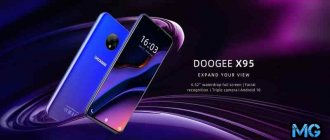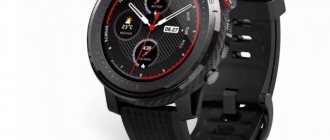The processor is one of the main parts of any mobile phone, and when choosing a device, it is important to evaluate this part. The rating of mobile processors will help you understand which one is better. We present it, as well as a list and rating of manufacturers, in this article. Depending on how powerful the processor is installed in the phone, the performance and power of the device largely depend. Let's look at what you need to look for when choosing a processor, and also figure out which chip can be considered good and feel free to choose a phone in which it is installed.
A14 Bionic
Apple's new six-core processor is distinguished by its high performance.
It has 4 Icestorm cores at 1.8 GHz and 2 Firestorm cores at 2.99 GHz. It is installed on all iPhone 12 series. This is a flagship chipset that can handle any resource-intensive applications and games, does not heat up at all and guarantees high-speed operation of the device.
Compared to previous versions, A14 Bionic consumes less energy, but is 40% more productive than its predecessors. It is so powerful that at the moment it can surpass Intel. Experts predict that it could become the basis for the creation of new MacBook models.
Pros:
- minimum chip area;
- high clock frequency;
- good energy efficiency;
- made using a 5-nanometer process technology.
Cons: found only on iPhones.
Characteristics
First, let's look at what you need to know about a mobile processor if the device is not purchased as a “dialer” and a means of working with a browser and instant messengers.
Number of cores and threads
All modern processors are developed on a multi-core architecture, often 4 or 8. But happiness is not in quantity, but in the number of threads that the device can process in parallel. And this already depends on the software.
It is the software (programs and operating system) that must be optimized for parallel processing by many cores
.
The iPhone does not have 8-core processors, but Apple's 4- or 6-core solutions are superior to competitors with higher specifications. And the technical process does not play a major role in this.
Architecture
They are built on two types of architecture:
- ARM;
- x86.
ARM uses a simplified set of RISC commands, only those actually needed and used by programs, games and the OS. Due to the fewer number of transistors and their size, ARM processors consume less power and, accordingly, their heat output is lower. The latter use a complex set of commands, which are divided into simple instructions before processing.
The company ARM Limited is working on the architecture; the Cortex cores it produces are installed in most mobile devices: one part (or half) of them is productive, the other part is energy efficient.
Process technology and cache
The technology is denoted by nanometers (nm) and refers to the dimensions of the gate of a sputtered transistor - the density of placement of electronic components on the substrate. This figure also indicates the speed and efficiency of the crystal. Devices produced using the 18-7 nm process technology are relevant for 2021.
Interesting information
Not a single smartphone manufacturer uses cores of its own production; they all purchase developments from ARM Limited.
Only Qualcomm and Apple have their own graphics accelerators; the rest buy ready-made Mali GPU solutions in the same ARM.
Mediatek and Qualcomm develop chips only for smartphone manufacturers, while Huawei and Apple have launched their own lines.
Snapdragon 888
The top modern flagship processor supports Wi-Fi 6E and 8K.
It has 8 cores - one Kryo 680 Prime at 2.8 GHz, 3 Kryo 680 Gold at 2.4 GHz and 4 Kryo 680 Silver at 1.8 GHz. It is found in new smartphones from Vivo and Xiaomi. It has the most technologically advanced 5G modem and sixth generation accelerator. Any smartphone with this processor will be able to record video in 4K at 120 fps or 8K at 30 fps.
The flagship SoC is used in both flagship and budget smartphones, making them worthy options in the mobile device market. In terms of performance and test results, the Snapdragon 888 is superior to the powerful, modern and technologically advanced Apple A13 Bionic.
But it was noted that the processor temperature rises by as much as 12 degrees during the test, and this is already a minus. Most new flagship models show a maximum of +5 degrees.
Pros:
- 5G support;
- works with memory up to 16 GB;
- cache memory size 4 MB;
- Wi-Fi in the 6 GHz band and Bluetooth 2.
Cons: Lack of smooth 8K video.
User voting
Which mobile processor would you choose or recommend?
Qualcomm Snapdragon 730G
0.00 % ( 0 )
HiSilicon Kirin 810
0.00 % ( 0 )
Qualcomm Snapdragon 712
0.00 % ( 0 )
HiSilicon Kirin 970
0.00 % ( 0 )
Qualcomm Snapdragon 710
0.00 % ( 0 )
Mediatek Helio P90
0.00 % ( 0 )
Qualcomm Snapdragon 665
9.09 % ( 1 )
Qualcomm Snapdragon 855
45.45 % ( 5 )
Apple A13 Bionic
9.09 % ( 1 )
Apple A12 Bionic
0.00 % ( 0 )
Samsung Exynos 9820
27.27 % ( 3 )
HiSilicon Kirin 980
9.09 % ( 1 )
Save your voting results so you don't forget!
To see the results you need to vote
Exynos 2100
A new processor from Samsung, which is installed in the manufacturer’s most powerful smartphones.
Compared to the previous version, the performance of this chipset has increased by 30%. Exynos consists of three clusters - one with a frequency of 2.9 GHz, the second with three 2.8 GHz cores and the third with 4 cores at 2.2 GHz. The latter are designed for basic tasks, they are energy efficient and low power. Smartphones with this chipset have a high screen refresh rate of 120 Hz.
The manufacturer abandons its own chips, using ARM products, namely ARM Mail-G78, which is a pretty good decision.
In tests, the Exynos 2100 outperforms its predecessor, the Exynos 990, as it runs longer under heavy load and does not heat up. In this case, throttling is practically not observed.
Pros:
- 5nm process technology;
- video in 8K 60 fps;
- does not heat up;
- consumes little energy.
Cons: not the most productive.
Technical process
Chip process technology refers to semiconductor manufacturing, which consists of the sequence of operations in the production of these chips.
It is designated as the size in “nm”, previously it was in “µm”. Today, developments are underway to implement the 7 nm process technology. As of fall 2020, there are 7 nm processors on sale, these are the newest ones.
The designation of the technical process itself at different times indicated either the gate size of a transistor made using this technology, or the density of elements, or the size of a memory cell, etc. In general, these are semiconductor processing technologies to achieve the declared characteristics. The smaller the technical process, the higher the operating frequency of the processor and the greater the energy efficiency.
Kirin 9000
This processor is found in Huawei Mate 40 series phones. An eight-core chipset with four powerful Cortex-A55 cores.
It operates at high frequencies, but consumes quite a lot of power. In difficult tasks, throttling appears. Smartphones running on this chipset will be able to record video in 4K format at 60 frames per second.
The chip operates with a maximum frequency of 3.1 GHz, supports ultra-fast LPDDR5 memory and memory cards up to 256 GB. It is equipped with a 24-core Mali-G78 cluster and consists of 15.3 billion transistors, which has not previously been seen in 5-nanometer technology.
Mate 40 smartphones run any programs and games that require the highest graphics settings, while the autonomy of the device does not suffer, since the chip is not power-hungry.
Pros:
- high performance;
- extensive graphics capabilities;
- 5G support;
- flagship level.
Cons: gets hot under high loads.
The best smartphones based on Kirin 990 (5G)
This chip is an entire computer with everything you need on one chip, including support for future networks - 5G.
The best smartphones with Kirin 990 (5G) are discussed below.
HUAWEI P40
The Kirin 990 processor raises overall performance to an incredibly high level, the device easily copes with hardware-intensive multitasking processes.
Thanks to its high-resolution, frameless OLED screen, the smartphone provides excellent image quality.
The device body has dust and moisture protection properties in accordance with the requirements of the IP53 standard. The phone runs on the Android operating system.
The resolution of the main camera in the HUAWEI P40 phone, which was developed by the famous company Leica, and the optical 3x zoom allow you to take professional-quality photos.
Specifications:
- display parameters - OLED, 6.1″, 2340×1080;
- rear cameras - 50, 16, 8 MP;
- selfie module - 32 MP;
- built-in/RAM memory – 128 GB/8 GB;
- Battery capacity - 3800 mAh.
Advantages
- high-quality assembly;
- cool display with low PWM level;
- very fast under-screen fingerprint scanner;
- smooth operation of the interface;
- a huge amount of RAM.
Flaws
- lack of Google services;
- weak battery;
- low water protection (IP53).
HUAWEI P40 Pro
The device boasts an instant response to any user command and increased performance of the top eight-core Kirin 990 processor.
P40 Pro is a stylish and functional model in a silver case with a bright, color-saturated screen and a powerful camera unit.
Users have access to two slots for SIM cards in Nano format, a slot for microSD, an expanded set of sensors and wireless communications.
Connecting headphones and a charger in the HUAWEI P40 Pro smartphone can be done via a wired USB Type-C interface.
Specifications:
- display parameters - OLED, 6.58″, 2640×1200;
- rear cameras - 50, 40, 12 MP;
- selfie module - 32 MP;
- built-in/RAM memory – 256 GB/8 GB;
- Battery capacity - 4200 mAh.
Advantages
- reasonable overall dimensions with a large screen;
- good autonomy;
- availability of wireless charging, including reverse;
- IR module for controlling various home appliances;
- instant unlocking by face, fingerprint;
- water protection.
Flaws
- no jack for wired headphones;
- Google store doesn't work;
- The phone allows the use of memory cards only of its own format.
Snapdragon 870
This is a simplified version of the Snapdragon 888 chipset and is not much different from the 865+ series.
It has an increased frequency - 3.2 GHz and supports Wi-Fi 6. It is produced using a 7-nm process technology and is distinguished by its speed, but it does not have a built-in 5G modem. Motorola and Xiaomi smartphones are produced on this chipset. It works with 16 GB of memory and will be found in flagship phones. The first model released with this processor was the Motorola Edge S.
The smartphone supports Wi-Fi 6E, and in AnTuTu it scores more than 600 thousand points, which is very good.
Under high loads, throttling and noticeable heating of the case are noticeable, but in order to successfully handle heavy games, it still has enough power. The picture does not freeze or twitch, the graphics are smooth and clear. Smartphones based on this processor cost from 40 thousand rubles.
Pros:
- high frequency;
- good gaming performance;
- playback and recording of video in 8K;
- energy efficiency.
Cons: gets very hot.
A13 Bionic
The chipset is built on a 7nm process and boasts high power efficiency and performance.
Here, according to the Apple classic, there are only two clusters of cores, but this does not have a negative impact on the result. It has two productive cores and 4 energy-efficient ones. Bionic automatically calculates the optimal operating mode of the device and activates it, allowing you to save energy consumption.
Smartphones with this chipset are 40% more energy efficient than previous versions, and now even a small battery holds a charge longer. The manufacturer achieved this figure by turning off passive components at the right time.
The chip is installed in all iPhone 11 and iPhone SE. Smartphones successfully run any games and resource-intensive programs. The heat dissipation system works perfectly here, the smartphone does not heat up even at the busiest moment.
Pros:
- economical and fast central processor;
- one of the best platforms on the market;
- good graphics capabilities and high-speed application operation;
- two high-performance cores.
Cons: Doesn't support 5G.
The best smartphones with Exynos 9825
The high-performance mobile processor Exynos 9825 is an improved version of the Exynos 9820 chip.
The Samsung platform is installed, including in the flagship Galaxy Note 10+.
Samsung Galaxy Note 10+ 12/256GB
The basis of the hardware of the model is a high-performance tandem of a powerful eight-core Samsung Exynos 9825 processor with a 7-nanometer process technology and an incredible (for smartphones) 12 GB of RAM.
Also, the Samsung Galaxy Note 10+ phone highlights the possibility of semi-professional shooting.
A powerful triple unit of main cameras with optical zoom and a good front module allow you to take decent quality pictures and videos even in poor lighting.
The cameras will satisfy the needs of the most demanding users.
The aesthetically attractive body of the device is made of stainless steel and tempered glass.
Specifications:
- display parameters - AMOLED, 6.8″, 3040×1440;
- rear cameras - 12, 16, 12 MP;
- selfie module - 10 MP;
- built-in/RAM memory – 256 GB/12 GB;
- Battery capacity - 4300 mAh.
Advantages
- power and performance;
- convenient stylus;
- battery life;
- fast charging;
- friendly, quickly customizable software.
Flaws
- not the most affordable price;
- The fingerprint scanner does not always work the first time.
Exynos 1080
This platform is currently used only in smartphones from Vivo and is created using 5-nanometer technology by Samsung.
The platform has 8 cores, divided into 3 clusters (1+3+4). The main Cortex-A78 core operates at 2.8 GHz. The chipset is powered by a 10-core Mali-G78 MP10 video accelerator. It has an adapter for Bluetooth, Wi-Fi and radio. Any smartphone with Exynos 1080 supports a single camera with a resolution of up to 200 MP, as well as video recording in 4K format.
Pros:
- integrated 5G modem;
- availability of wireless adapters;
- support for screens with a frequency of 90-140 Hz;
- large margin for camera resolution.
Cons: works with memory up to 8 GB.
Snapdragon 865 Plus
A 7-core powerful processor, which is positioned as a 10% more overclocked Snapdragon 865. It supports 5G and is found in Samsung and Asus smartphones.
The 865 Plus runs gaming smartphones and is the best choice for gamers. The chip does not have a built-in 5G modem, but in smartphones it will be a separate module.
This chip is considered the most powerful for Android devices, but such smartphones will have a corresponding price The platform no longer has an integrated LTE modem, and all communication modules are placed on a separate 5G modem with LTE support.
Pros:
- frequency 3.1 GHz;
- NFC, Wi-Fi 6 and Bluetooth2 support;
- top device;
- powerful graphics processor;
- fast work.
Cons: Smartphones on this platform are quite expensive.
Snapdragon 865
This 8-core 7nm chipset is slightly slower than the previous one, running at 2.84 GHz.
The platform is installed on many smartphones of different price categories. These are mainly Xiaomi, OnePlus, Oppo, Realme, Redmi, Samsung. Even during complex processes, the chip heats up no higher than 55 degrees and cools down very quickly. It can handle any, even the most demanding games and works flawlessly.
Compared to the previous Snapdragon, this one has become faster. It has one most powerful core, 4 productive and 2 economical ones.
It works with fast LPDDR5 memory and smartphones running on it will record videos at the maximum possible slow motion of 960 frames per second.
Pros:
- top device;
- high scores on synthetic tests;
- good performance;
- real energy efficiency.
Cons: expensive models with this chip.
Kirin 9000E
This processor differs from the Kirin 9000 in a minimal number of parameters.
It is used in smartphones from Huawei. At the moment, the new Huawei Mate 40 boasts this processor. The 9000E is equipped with a graphics processor, as well as a Mali-G78 accelerator, but it has 22 cores. This chip is not designed for gaming phones, but the system runs quite quickly on it.
Video on smartphones with this processor is processed very quickly, which will be appreciated by mobile film enthusiasts and bloggers.
Pros:
- decent energy efficiency;
- memory up to 16 GB;
- 4 energy-efficient cores out of 8;
- 5G support.
Cons: not good at difficult games.
Processor performance rating table for smartphones
| CPU | Maximum frequency of the main core unit, GHz | Number of Cores | AnTuTu 8 test result | Rating points |
| A14 Bionic | 2,9 | 6 | 596064 | 96 |
| Snapdragon 888 | 2,8 | 8 | 711376 | 93 |
| Exynos 2100 | 2,9 | 8 | 687581 | 89 |
| Kirin 9000 | 3,1 | 8 | 681581 | 88 |
| Snapdragon 870 | 3,2 | 8 | 635535 | 86 |
| A13 Bionic | 2,6 | 6 | 471544 | 85 |
| Exynos 1080 | 2,8 | 8 | 625481 | 82 |
| Snapdragon 865 Plus | 3,1 | 8 | 615037 | 81 |
| Snapdragon 865 | 2,8 | 8 | 578679 | 80 |
| Kirin 9000E | 3,1 | 8 | 627145 | 79 |
Internal memory L2 and L3
Memory "Cache" of the second L2 and third L3 levels indicates the amount of internal memory of the processor. This memory is located on a chip and has a very high operating speed compared to RAM.
The larger the amount of this memory, the better for performance. L3 should be from 1 MV for good performance, L2 is measured in KB.
Additional information about processor manufacturing companies can be found here.
Table of processors for smartphones and tablets
2021 The release date of the processors is counted back from October 2015 if the number of months and years (from 1 to 5) are specified. If just a year from the 2000s is indicated, then this is the year of manufacture.
| Model | GPU | L2 + L3 Cache | MHz (Normal/Turbo) | Cores/threads | Process technology (nm) | release date |
| Apple M1 | Apple M1 8-Core GPU | 16Mb | 2064 ‑ 3200 | 5 | 2020 | |
| Apple A12Z Bionic | A12Z Bionic GPU | 8Mb | 2490 | 4x Vortex + 4x Tempest | 7 | 2020 |
| Apple A12X Bionic | A12X Bionic GPU | 8Mb | 2490 | 4x Vortex + 4x Tempest | 7 | 2018 |
| Apple A14 Bionic | A14 Bionic GPU | 6/6 | 2020 | |||
| HiSilicon Kirin 9000 | Mali-G78 MP24 | 2050 ‑ 3130 | 8/8 | 5 | 2020 | |
| Qualcomm Snapdragon 888 5G | Adreno 660 | +3 Mb | 1800 ‑ 2840 | 8/8 | 5 | 2020 |
| Samsung Exynos 2100 5G | Mali G78 MP14 | 2200 ‑ 2900 | 8/8 | 5 | 2021 | |
| Apple A13 Bionic | A13 Bionic GPU | 12Mb | 2660 | 2x Lightning + 4x Thunder | 7 | 2019 |
| Qualcomm Snapdragon 865+ (Plus) | Adreno 650 | 1.8Mb + 7Mb | 2420 ‑ 3100 | 8/8 | 7 | 2020 |
| MediaTek Dimensity 1200 | Mali-G77 MP9 | 2000 ‑ 3000 | 8/8 | 7 | 2021 | |
| Qualcomm Snapdragon 865 | Adreno 650 | 1.8Mb + 7Mb | 2420 ‑ 2840 | 8/8 | 7 | 2020 |
| Model | GPU | L2 + L3 Cache | MHz (Normal/Turbo) | Cores/threads | Process technology (nm) | release date |
| Apple A12 Bionic | A12 Bionic GPU | 8MB | -2490 | 2x Vortex + 4x Tempest | 7 | 2018 |
| Qualcomm Snapdragon 780G 5G | Adreno 642 | 1900 ‑ 2400 | 8/8 | 5 | 2021 | |
| HiSilicon Kirin 990 5G | Mali-G76 MP16 | 2860 | 4x A76 + 4x A55 | 7 | 2019 | |
| HiSilicon Kirin 990 | Mali-G76 MP16 | 2860 | 4x A76 + 4x A55 | 7 | 2019 | |
| Samsung Exynos 990 | Mali-G77 MP11 | 2000 ‑ 2730 | 2x Exynos M5 + 4x A76 + 4x A55 | 7 | 2019 | |
| MediaTek Dimensity 1100 | Mali-G77 MP9 | 2000 ‑ 2600 | 8/8 | 7 | 2021 | |
| Qualcomm Snapdragon 860 | Mali-G77 MP9 | 1.8MB + 5MB | ‑ 2960 | 8/8 | 7 | 2021 |
| Qualcomm Snapdragon 855+ / 855 Plus | Adreno 640 | 1.8Mb + 5Mb | 2960 | 8 | 7 | 2019 |
| Qualcomm Snapdragon 855 | Adreno 640 | 1.8Mb + 5Mb | 2840 | 8 | 7 | 2019 |
| Apple A11 Bionic Antutu: 215,000 points | A11 Bionic GPU | 8MB | -2390 | 2x Monsoon + 4x Mistral | 10 | 2017 |
| Apple A10X Fusion Antutu: 195,000 points | A10X Fusion GPU | 3Mb + 8Mb | 2390 | 3x Hurricane + 3x Zephyr | 10 | 2017 |
| Samsung Exynos 9825 | Mali-G76 MP12 | 2Mb | 1900 ‑ 2730 | 2x Exynos M4 + 2x A75 + 4x A55 | 7 | 2019 |
| Samsung Exynos 9820 | Mali-G76 MP12 | 1.5Mb + 2Mb | 1900 ‑ 2700 | 2x Exynos M4 + 2x A76 + 4x A55 | 8 | 2018 |
| HiSilicon Kirin 820 | Mali-G57 MP6 | 1840 ‑ 2360 | 4x A76 + 4x A55 | 7 | 2020 | |
| HiSilicon Kirin 810 | Mali-G52 MP6 | 1880 ‑ 2270 | 2x A76 + 6x A55 | 7 | 2019 | |
| HiSilicon Kirin 980 | Mali-G76 MP10 | -2600 | 8/8 | 7 | 2017 | |
| Qualcomm Snapdragon 660 SDM660 Antutu: 117,000 points | Adreno 512 | 2200 | 8/8 | 14 | 2017 | |
| MediaTek MT6799 Helio X30 Antutu: 147000 points | IMG PowerVR 7XTP-MT4 | 2500 | 10 | 10 | 2017 | |
| Xiaomi Pinecone V970 | Mali G71 MP12 | 8/8 | 10 | March 2017 | ||
| Snapdragon 205 MSM8905 | Adreno 304 | 1100 | 2 | 28 | March 2017 | |
| HiSilicon Honor KIRIN 658 | 2100 | 8 | 16 | March 2017 | ||
| Xiaomi Pinecone Surge S1 V670 | Mali-T880 MP4 | 2200 | 8/8 | 28 | 2017 February | |
| MediaTek MT6757T Helio P25 | Mali-T880 MP2 | 2500 | 8/8 | 16 | 2017 February | |
| Samsung Exynos 9 Octa 8895M Antutu: 175,000 points | Mail-G71 MP20 | 2300 | 8/8 | 10 | 2017 January | |
| Qualcomm Snapdragon 835 MSM8998 Antutu: 177000 points | Adreno 540 | 2Mb | 2450 | 8/8 | 10 | 2016 December |
| MediaTek MT6797X Helio X27 | Mali-T860 MP4 | 2600 | 10 | 20 | 2016 December | |
| Samsung Exynos 7 Octa 7880 | Mali-T860 MP4 | 1870 | 8/8 | 14 | 2016 December | |
| Snapdragon 626 MSM8953 Pro | Adreno 506 | 2210 | 8 | 14 | 2016 December | |
| MediaTek MT6757 Helio P20 | Mali-T880 MP2 | 2340 | 8 | 16 | November 2016 | |
| MediaTek MT6755T/MT6756 Helio P15 | Mali-T860 MP2 | 2200 | 8 | 28 | November 2016 | |
| Qualcomm Snapdragon 845 SDM845 Antutu: 263000 points | Adreno 630 | 2800 | 8 | 10 | 2018 | |
| Qualcomm Snapdragon 765G | Adreno 620 | 2400 | 2x A76 + 6x A55 | 7 | 2019 | |
| Qualcomm Snapdragon 765 | Adreno 620 | 1800 ‑ 2300 | 2x A76 + 6x A55 | 7 | 2019 | |
| Mediatek Helio G90T | Mali-G76 MP4 | 2050 | 2x Cortex-A76 + 6x Cortex-A55 | 12 | 2019 | |
| Qualcomm Snapdragon 730G | Adreno 618 | 1Mb | 2200 | 2x Cortex-A76 + 6x Cortex-A55 | 8 | 2019 |
| MediaTek Dimensity 700 | Mali-G57 MP2 | 2000 ‑ 2200 | 8/8 | 2021 | ||
| Qualcomm Snapdragon 730 | Adreno 618 | 1Mb | 2200 | 2x Cortex-A76 + 6x Cortex-A55 | 7 | 2019 |
| Qualcomm Snapdragon 720G | Adreno 618 | 2300 | 2x Cortex-A76 + 6x Cortex-A55 | 8 | 2020 | |
| Mediatek Helio P90 | PowerVR GM9446 | 2Mb | 2200 | 2x Cortex-A75 + 6x Cortex-A55 | 12 | 2018 |
| Model | GPU | L2 + L3 Cache | MHz (Normal/Turbo) | Cores/threads | Process technology (nm) | release date |
| MediaTek Helio G25 | PowerVR GE8320 | 2000 | 8x ARM Cortex-A53 | 12 | 2020 | |
| Samsung Exynos 9 Octa 9820 | Mali-G76 MP12 | 8 | 8 | 2019 | ||
| Samsung Exynos 7 Octa 7904 | Mali-G71 | 1800 | 8 | 14 | 2019 | |
| Samsung Exynos 9810 Antutu: 236000 points | Mali-G72 MP18 | -2900 | 8/8 | 10 | 2018 | |
| Samsung Exynos 7 Octa 7885 | Mali-G71 | 2100 | 8 | 14 | 2018 | |
| Samsung Exynos 9 Dual 9110 | 2018 | |||||
| Samsung Exynos 7 Octa 7884 S5E7884A | Mali-G71 | 8 | 14 | 2018 |
| Model | GPU | L2 + L3 Cache | MHz (Normal/Turbo) | Cores/threads | Process technology (nm) | release date |
| HiSilicon Kirin 970 Antutu: 163000 points | Mali-G72 MP12 | 2400 | 8/8 | 10 | 2017 | |
| HiSilicon Kirin 960 Antutu: 100,000 points | Mali G71 MP8 | 2100 | 8/8 | 16 | 2016 | |
| HiSilicon Kirin 960s | Mali G71 MP8 | 2100 | 8/8 | 16 | 2016 | |
| Apple A9X | 2260 | 2/2 | 14 | 2015 | ||
| Samsung Exynos 8890 Antutu: 130,000 points | Mali-T880 MP12 | 2600 | 8/8 | 14 | 2016 | |
| HiSilicon Kirin 955 Antutu: 100,000 points | Mali-T880 MP4 | 2500 | 8/8 | 16 | 2016 | |
| HiSilicon Kirin 950 | 2300 | 8/8 | 16 | 2016 | ||
| Apple A10 Fusion Antutu: 180,000 points | 3+4Mb | 2340 | 4 | 16 | 2016 | |
| Qualcomm Snapdragon 821 MSM8996 Pro | 1.5Mb | 2400 | 4/4 | 14 | 2016 | |
| Samsung Exynos 7420 Octa | 2100 | 8/8 | 14 | 7 months | ||
| Qualcomm Snapdragon 820 MSM8996 | 1.5Mb | 2200 | 4/4 | 14 | 2016 | |
| Apple A9 | 1800 | 2/2 | 14 | 2 months | ||
| Intel Atom x7-Z8700 | 2Mb | 1600 ‑ 2400 | 4/4 | 14 | 7 months | |
| Qualcomm Snapdragon 810 MSM8994 | 2000 | 8/8 | 20 | 1 year 6 months | ||
| Snapdragon 653 MSM8976SG/MSM8976 Pro | Adreno 510 | 1Mb | 1950 | 8 | 28 | 2016 October |
| Snapdragon 620 MSM8976 / Snapdragon 652 MSM8976 | Adreno 510 | 1Mb | 1800 | 8/8 | 28 | 2015 |
| Qualcomm Snapdragon 808 MSM8992 | 2000 | 6/6 | 20 | 1 year 6 months | ||
| Qualcomm Snapdragon 650 MSM8956 | 1800 | 6/6 | 28 | 2016 | ||
| Intel Atom Z3795 | 2Mb | 1590 ‑ 2390 | 4/4 | 22 | 1 year 5 months | |
| Intel Atom Z3785 | 2Mb | 1490 ‑ 2410 | 4/4 | 22 | 1 year 4 months | |
| Intel Atom Z3775 | 2Mb | 1460 ‑ 2390 | 4/4 | 22 | 1 year 4 months | |
| Intel Atom Z3775D | 2Mb | 1490 ‑ 2410 | 4/4 | 22 | 1 year 5 months | |
| Intel Atom Z3770 | 2Mb | 1460 ‑ 2400 | 4/4 | 22 | 2 years 2 months | |
| Intel Atom Z3770D | 2Mb | 1500 ‑ 2410 | 4/4 | 22 | 2 years 2 months | |
| Intel Atom x5-Z8500 | 2Mb | 1440 ‑ 2240 | 4/4 | 14 | 8 months | |
| Nvidia Tegra X1 | 2.5Mb | 8/8 | 20 | 10 months | ||
| Apple A8X | 2+4Mb | 1500 | 3/3 | 20 | 1 year | |
| Nvidia Tegra K1 (Denver) | 2Mb | 2300 | 2/2 | 28 | 1 year | |
| Mediatek MT8173 | 2400 | 4/4 | 28 | 8 months | ||
| Mediatek MT6595 Turbo | 2Mb | 2500 | 8/8 | 28 | 1 year 8 months | |
| Samsung Exynos 5433 Octa | 1900 | 8/8 | 20 | 1 year 2 months |
| № | Model | L2 Cache + L3 Cache | MHz (Normal - - Turbo) | Cores/threads | Process technology (nm) | Architecture | Release time |
| 20 | Apple A8 | 1MB + 4MB | 1400 | 2/2 | 20 | ARM | 1 year 2 months |
| 21 | Nvidia Tegra K1 | 2MB | 2300 | 4/4 | 28 | ARM | 1 year 10 months |
| 22 | Qualcomm Snapdragon 805 APQ8084 | 2MB | 2700 | 4/4 | 28 | ARM | 1 year 11 months |
| 23 | Intel Atom Z3580 | 2MB | 2330 | 4/4 | 22 | x86 | 1 year 5 months |
| 24 | Intel Atom Z3736F | 2MB | 1330 ‑ 2160 | 4/4 | 22 | x86 | 1 year 6 months |
| 25 | Intel Atom Z3736G | 2MB | 1330 ‑ 2160 | 4/4 | 22 | x86 | 1 year 6 months |
| Intel Atom x5-Z8350 | 2MB | 1440 ‑ 1920 | 4/4 | 14 | x86 | 2016 | |
| 26 | Intel Atom x5-Z8300 | 2MB | 1440 ‑ 1840 | 4/4 | 14 | x86 | 8 months |
| 28 | Intel Atom Z3745 | 2MB | 1330 ‑ 1860 | 4/4 | 22 | x86 | 1 year 5 months |
| 29 | Intel Atom Z3745D | 2MB | 1330 ‑ 1830 | 4/4 | 22 | x86 | 1 year 5 months |
| 30 | Intel Atom Z3740 | 2MB | 1330 ‑ 1860 | 4/4 | 22 | x86 | 2 years 2 months |
| 31 | Intel Atom Z3740D | 2MB | 1330 ‑ 1830 | 4/4 | 22 | x86 | 2 years 2 months |
| 32 | Intel Atom Z3735D | 2MB | 1330 ‑ 1830 | 4/4 | 22 | x86 | 1 year 6 months |
| 33 | Intel Atom Z3735E | 2MB | 1330 ‑ 1830 | 4/4 | 22 | x86 | 1 year 6 months |
| 34 | Intel Atom Z3735F | 2MB | 1330 ‑ 1830 | 4/4 | 22 | x86 | 1 year 6 months |
| 35 | Intel Atom Z3735G | 2MB | 1330 ‑ 1830 | 4/4 | 22 | x86 | 1 year 6 months |
| 36 | Qualcomm Snapdragon 801 MSM8974AC | 2MB | 2450 | 4/4 | 28 | ARM | 2 years 6 months |
| 37 | Samsung Exynos 5430 Octa | 512KB | 1800 | 8/8 | 20 | ARM | 1 year 2 months |
| 38 | Mediatek MT6595 | 2MB | 2200 | 8/8 | 28 | ARM | 1 year 9 months |
| 39 | Qualcomm Snapdragon 801 APQ8074AB | 2MB | 2360 | 4/4 | 28 | ARM | 1 year 11 months |
| № | Model | L2 Cache + L3 Cache | MHz (Normal - - Turbo) | Cores/threads | Process technology (nm) | Architecture | Release time |
| 40 | Qualcomm Snapdragon 801 MSM8974AB | 2MB | 2360 | 4/4 | 28 | ARM | 2 years 5 months |
| 41 | Nvidia Tegra 4 | 1800 | 4/4 | 28 | ARM | 2 years 10 months | |
| 42 | Intel Atom Z3680 | 1MB | 1330 ‑ 2000 | 2/2 | 22 | x86 | 2 years 1 month |
| 43 | Intel Atom Z3680D | 1MB | 1330 ‑ 2000 | 2/2 | 22 | x86 | 2 years 1 month |
| 44 | Mediatek MT6595M | 2MB | 2000 | 8/8 | 28 | ARM | 1 year 9 months |
| 45 | Qualcomm Snapdragon 801 MSM8974AA | 2MB | 2260 | 4/4 | 28 | ARM | 1 year 3 months |
| 46 | HiSilicon Kirin 925 | 1800 | 8/8 | 28 | ARM | 1 year 3 months | |
| 47 | Qualcomm Snapdragon 800 MSM8974 | 2MB | 2300 | 4/4 | 28 | ARM | 2 years 5 months |
| 48 | Samsung Exynos 5420 Octa | 512KB | 1800 | 8/8 | 28 | ARM | 2 years 1 month |
| 49 | HiSilicon Kirin 920 | 1700 | 8/8 | 28 | ARM | 1 year 3 months | |
| 50 | HiSilicon Kirin 935 | 2200 | 8/8 | 28 | ARM | 8 months | |
| MediaTek MT6797M Helio X20 | 2300 | 10 | 20 | ARM | 2016 July | ||
| 51 | Mediatek Helio X10 MT6795 | 2200 | 8/8 | 28 | ARM | 1 year 5 months | |
| Qualcomm Snapdragon 625 | 2000 | 8/8 | 14 | ARM | 2016 | ||
| Samsung Exynos 7870 Octa | 1600 | 8/8 | 14 | ARM | 2016 | ||
| HiSilicon Kirin 650 | 2000 | 8/8 | 16 | ARM | 2016 | ||
| 52 | HiSilicon Kirin 930 | 2000 | 8/8 | 28 | ARM | 8 months | |
| Mediatek Helio P10 MT6755 | 2000 | 8/8 | 28 | ARM | 2015 | ||
| 53 | Apple A7 | 1MB + 4MB | 1300 | 2/2 | 28 | ARM | 2 years 2 months |
| 54 | Intel Atom Z3570 | 2MB | 2000 | 4/4 | 22 | x86 | 1 year 3 months |
| 55 | Intel Atom Z3560 | 2MB | 1830 | 4/4 | 22 | x86 | 1 year 6 months |
| 56 | Samsung Exynos 5410 Octa | 512KB | 1600 | 8/8 | 28 | ARM | 2 years 3 months |
| 57 | Intel Atom Z3480 | 1MB | 2133 | 2/2 | 22 | x86 | 1 year 7 months |
| 58 | Intel Atom x3-C3440 | 1400 | 4/4 | 28 | 8 months | ||
| 59 | Samsung Exynos 5260 Hexa | 1700 | 6/6 | 28 | ARM | 1 year 8 months | |
| Samsung Exynos 5410 Octa | 512 KB | 1600 | 8/8 | 28 | ARM | ||
| № | Model | L2 Cache + L3 Cache | MHz (Normal - - Turbo) | Cores/threads | Process technology (nm) | Architecture | Release time |
| 60 | Mediatek MT8135 | 1700 | 4/4 | 28 | ARM | 2 years 5 months | |
| 61 | Intel Atom Z3530 | 2MB | 1330 | 4/4 | 22 | x86 | 1 year 5 months |
| 62 | Samsung Exynos 5250 Dual | 1MB | 1700 | 2/2 | 32 | ARM | 2 years 10 months |
| Mediatek MT8752 | 1700 | 8/8 | 28 | ARM | 2014 | ||
| Mediatek MT6752 | 1700 | 8/8 | 28 | ARM | 2014 | ||
| Samsung Exynos 7580 Octa | 1600 | 8/8 | 28 | ARM | 2015 | ||
| Qualcomm Snapdragon 617 MSM8952 | 1500 | 8/8 | 28 | ARM | 2015 | ||
| Qualcomm Snapdragon 616 MSM8939v2 | 1700 | 8/8 | 28 | ARM | 2014 | ||
| 63 | Qualcomm Snapdragon 615 MSM8939 | 1700 | 8/8 | 28 | ARM | 2014 | |
| 64 | Qualcomm Snapdragon 425 | 1400 | 4/4 | 28 | ARM | 9 months | |
| 67 | Rockchip RK3288 | 1800 | 4/4 | 28 | ARM | 1 year 4 months | |
| 68 | Mediatek MT6753 | 1500 | 8/8 | 28 | ARM | 8 months | |
| 69 | Mediatek MT6592 | 1MB | 1700 | 8/8 | 28 | ARM | 1 year 10 months |
| 70 | Qualcomm Snapdragon 610 MSM8936 | 1700 | 4/4 | 28 | ARM | 1 year 8 months | |
| MediaTek MT8163 V/A 1.5 GHz | 1500 | 4/4 | 28 | ARM | 2015 | ||
| 71 | Qualcomm Snapdragon 600 APQ8064T | 2MB | 1700 | 4/4 | 28 | ARM | 2 years 10 months |
| Samsung Exynos 7578 | 1500 | 4/4 | ARM | 2016 | |||
| 72 | HiSilicon Kirin 910T | 1800 | 4/4 | 28 | ARM | 1 year 5 months | |
| MediaTek MT8163 V/B 1.3 GHz | 1300 | 4/4 | 28 | ARM | 2015 | ||
| 73 | MediaTek MT8161 | 1300 | 4/4 | 28 | ARM | 10 months | |
| 74 | Intel Atom x3-C3230RK | 1100 | 4/4 | 28 | 8 months | ||
| Qualcomm Snapdragon 430 | 1400 | 8/8 | 28 | ARM | 2016 | ||
| 75 | Qualcomm Snapdragon 415 | 1400 | 8/8 | 28 | ARM | 9 months | |
| 76 | Intel Atom Z3460 | 1MB | 1600 | 2/2 | 1 year 7 months | ||
| 77 | Qualcomm Snapdragon S4 Pro APQ8064A | 2MB | 1500 | 4/4 | 28 | ARM | 3 years 9 months |
| 78 | Mediatek MT8732 | 1500 | 4/4 | 28 | ARM | 1 year 4 months | |
| 79 | Mediatek MT8165 | 1500 | 4/4 | 28 | ARM | 1 year 4 months | |
| № | Model | L2 Cache + L3 Cache | MHz (Normal - - Turbo) | Cores/threads | Process technology (nm) | Architecture | Release time |
| 80 | Mediatek MT6732 | 1500 | 4/4 | 28 | ARM | 1 year 7 months | |
| 81 | Mediatek MT6735 | 1500 | 4/4 | 28 | ARM | 1 year | |
| 81 | Mediatek MT8735 | 1300 | 4/4 | 28 | ARM | 2015 | |
| 81 | Mediatek MT6737 | 1250 | 4/4 | 28 | ARM | 2016 | |
| 82 | Rockchip RK3188 | 1800 | 4/4 | 28 | ARM | 2 years 10 months | |
| 83 | Qualcomm Snapdragon 410 MSM8916 | 1400 | 4/4 | 28 | ARM | 1 year 11 months | |
| 84 | Qualcomm Snapdragon 410 APQ8016 | 1200 | 4/4 | 28 | ARM | 1 year 11 months | |
| 85 | HiSilicon Kirin 620 | 1200 | 8/8 | 28 | ARM | 11 months | |
| 86 | HiSilicon Kirin 910 | 1600 | 4/4 | 28 | ARM | 1 year 5 months | |
| 87 | Intel Atom Z2760 | 1MB | 1800 | 2/4 | 32 | x86 | 2 years 11 months |
| 88 | Qualcomm Snapdragon 400 MSM8928 | 1600 | 4/4 | 28 | ARM | 2 years 5 months | |
| 89 | Qualcomm Snapdragon 400 APQ8028 | 1600 | 4/4 | 28 | ARM | 2 years 5 months | |
| 90 | Marvell Armada PXA1908 | 1200 | 4/4 | 28 | ARM | 1 year | |
| 91 | Apple A6x | 1400 | 2 | 32 | ARM | 2 years 10 months | |
| 92 | Intel Atom Z2580 | 1MB | 1300 ‑ 2000 | 2/4 | 32 | x86 | 3 years 9 months |
| 93 | Qualcomm Snapdragon S4 Pro MSM8960DT | 1MB | 1700 | 2/2 | 28 | ARM | 2 years 5 months |
| 94 | Qualcomm Snapdragon S4 Pro MSM8960T | 1MB | 1700 | 2/2 | 28 | ARM | 3 years 7 months |
| 95 | Qualcomm Snapdragon 400 8930AB | 1MB | 1700 | 2/2 | 28 | ARM | 2 years 9 months |
| 96 | Qualcomm Snapdragon S4 Plus APQ8060A | 1MB | 1500 | 2/2 | 28 | ARM | 3 years 9 months |
| 97 | Qualcomm Snapdragon S4 Plus MSM8960 | 1MB | 1500 | 2/2 | 28 | ARM | 3 years 9 months |
| 98 | Qualcomm Snapdragon S4 Plus MSM8260A | 1MB | 1500 | 2/2 | 28 | ARM | 3 years 9 months |
| 99 | Intel Atom Z2560 | 1MB | 933 ‑ 1600 | 2/4 | 32 | x86 | 3 years 10 months |
| № | Model | L2 Cache + L3 Cache | MHz (Normal - - Turbo) | Cores/threads | Process technology (nm) | Architecture | Release time |
| 100 | AMD Z-60 | 1MB | 1000 | 2/2 | 40 | x86 | 2 years 10 months |
| 101 | AMD Z-01 | 1MB | 1000 | 2/2 | 40 | x86 | 4 years 5 months |
| 102 | Apple A6 | 1000 | 2 | 32 | ARM | 3 years 2 months | |
| 103 | Intel Atom x3-C3130 | 1000 | 2/2 | 28 | 8 months | ||
| 104 | Samsung Exynos 4412 Quad | 1400 | 4/4 | 32 | ARM | 3 years 3 months | |
| 105 | NVIDIA Tegra 3 | 1200 ‑ 1300 | 4/4 | 40 | ARM | 4 years | |
| 106 | Mediatek MT8127 | 512KB | 1500 | 4/4 | 28 | ARM | 1 year 5 months |
| 107 | Mediatek MT6589T | 2MB | 1500 | 4/4 | 28 | ARM | 2 years 5 months |
| 108 | Mediatek MT8389 | 1MB | 1200 | 4/4 | 28 | ARM | 2 years 6 months |
| 109 | Mediatek MT8125 | 1MB | 1200 | 4/4 | 28 | ARM | 2 years 6 months |
| Spreadtrum SC9830A | 1500 | 4/4 | 28 | ARM | 2016 | ||
| 110 | Samsung Exynos 3470 Quad | 1400 | 4/4 | 28 | ARM | 1 year 3 months | |
| Samsung Exynos 3475 Quad | 1300 | 4/4 | 28 | ARM | 2015 | ||
| 111 | Mediatek MT8121 | 1MB | 1300 | 4/4 | 28 | ARM | 2 years 5 months |
| 112 | Mediatek MT6582 | 512KB | 1300 | 4/4 | 28 | ARM | 2 years 1 month |
| 113 | Mediatek MT6582M | 512KB | 1300 | 4/4 | 28 | ARM | 1 year 7 months |
| Mediatek MT6580M | 512KB | 1300 | 4/4 | 28 | ARM | 2016 | |
| Spreadtrum SC7731 | 1300 | 4/4 | 28 | ARM | 2015 | ||
| Qualcomm Snapdragon 212 APQ8009 | 1300 | 4/4 | 28 | ARM | 2015 | ||
| 114 | Qualcomm Snapdragon 400 MSM8926 | 1200 | 4/4 | 28 | ARM | 2 years 6 months | |
| 115 | Qualcomm Snapdragon 400 MSM8226 | 1200 | 4/4 | 28 | ARM | 2 years 11 months | |
| 116 | Qualcomm Snapdragon 400 APQ8026 | 1200 | 4/4 | 28 | ARM | 2 years 5 months | |
| 117 | Mediatek MT6589 | 1200 | 4/4 | 28 | ARM | 2 years 10 months | |
| 118 | Qualcomm Snapdragon 200 MSM8212 | 1200 | 4/4 | 28 | ARM | 2 years 5 months | |
| 119 | Qualcomm Snapdragon 210 MSM8909 | 1100 | 4/4 | 28 | ARM | 4 months | |
| № | Model | L2 Cache + L3 Cache | MHz (Normal - - Turbo) | Cores/threads | Process technology (nm) | Architecture | Release time |
| 120 | Marvell PXA1088 | 1200 | 4/4 | 40 | ARM | 2 years 9 months | |
| 121 | Qualcomm Snapdragon S4 Plus MSM8930 | 1MB | 1200 | 2/2 | 28 | ARM | 3 years 1 month |
| 122 | Qualcomm Snapdragon S4 Plus MSM8230 | 1MB | 1200 | 2/2 | 28 | ARM | 3 years 1 month |
| 123 | Intel Atom Z2480 | 512KB | 2000 | 1/2 | 32 | x86 | 3 years 10 months |
| 124 | Intel Atom Z2460 | 512KB | 1300 ‑ 1600 | 1/2 | 32 | x86 | 3 years 10 months |
| 125 | Qualcomm Snapdragon S4 Plus MSM8227 | 1MB | 1000 | 2/2 | 28 | ARM | 3 years 9 months |
| 126 | Samsung Exynos 4212 1.5 GHz | 1MB | 1500 | 2/2 | 32 | ARM | 4 years 1 month |
| 127 | Texas Instruments OMAP 4470 | 1500 | 2/2 | 45 | ARM | 4 years 6 months | |
| 128 | HiSilicon k3v2 Hi3620 | 1200 | 4/4 | 40 | ARM | 3 years 9 months | |
| 129 | Rockchip RK3066 1.5 GHz | 512KB | 1500 | 2/2 | 40 | ARM | 3 years 4 months |
| 130 | Qualcomm Snapdragon S4 Play MSM8625Q | 1200 | 4/4 | 45 | ARM | 3 years 1 month | |
| 131 | Qualcomm Snapdragon 200 8225Q | 1400 | 4/4 | 45 | ARM | 3 years 1 month | |
| 132 | Qualcomm Snapdragon S4 Play MSM8225Q | 1200 | 4/4 | 45 | ARM | 3 years 1 month | |
| 133 | MediaTek MT8312 | 1300 | 2/2 | 28 | ARM | 1 year 10 months | |
| 134 | Renesas MP5232 | 1500 | 2/2 | ARM | 3 years 9 months | ||
| 135 | Broadcom BCM21664T | 1200 | 2/2 | ARM | 2 years 10 months | ||
| 136 | Marvell PXA986 | 1200 | 2/2 | 45 | ARM | 3 years 3 months | |
| 137 | Qualcomm Snapdragon S3 MSM8660 | 1MB | 1700 | 2/2 | 45 | ARM | 3 years 9 months |
| 138 | Qualcomm Snapdragon S3 MSM8260 | 1MB | 1500 | 2/2 | 45 | ARM | 3 years 9 months |
| 139 | Samsung Exynos 4210 1.4 GHz | 1MB | 1400 | 2/2 | 45 | ARM | 4 years 9 months |
| № | Model | L2 Cache + L3 Cache | MHz (Normal - - Turbo) | Cores/threads | Process technology (nm) | Architecture | Release time |
| 140 | Texas Instruments OMAP 4460 | 1200 | 2/2 | 45 | ARM | 4 years 4 months | |
| 141 | Rockchip RK3168 | 1200 | 2/2 | 28 | ARM | 2 years 10 months | |
| 142 | Samsung Exynos 4210 1.2 GHz | 1MB | 1200 | 2/2 | 45 | ARM | 4 years 10 months |
| 143 | MediaTek MT8377 | 1MB | 1200 | 2/2 | 40 | ARM | 2 years 9 months |
| 144 | Broadcom BCM28155 | 1200 | 2/2 | 40 | ARM | 3 years 11 months | |
| 145 | Texas Instruments OMAP 4430 | 1000 | 2/2 | 45 | ARM | 4 years 6 months | |
| 146 | MediaTek MT6572 | 1MB | 1200 | 2/2 | 28 | ARM | 2 years 8 months |
| 147 | Spreadtrum SC8830 | 512KB | 1200 | 4/4 | 28 | ARM | 10 months |
| 148 | Apple A5x | 1000 | 2 | 32 | ARM | 3 years 8 months | |
| 149 | Qualcomm Snapdragon S4 Play MSM8225 | 1500 | 2/2 | 45 | ARM | 3 years 10 months | |
| 150 | Intel Atom Z2420 | 512KB | 1200 | 1/2 | 32 | x86 | 2 years 9 months |
| 151 | Apple A5 | 1000 | 2 | 40 | ARM | 4 years 5 months | |
| 152 | Nvidia Tegra 2 (250) | 1MB | 1000 | 2/2 | 40 | ARM | 5 years 10 months |
| 153 | Qualcomm Snapdragon 200 8210 | 1200 | 2/2 | 28 | ARM | 2 years 5 months | |
| 154 | MediaTek MT8317T | 1200 | 2/2 | ARM | 2 years 10 months | ||
| 155 | MediaTek MT6577 | 1000 | 2/2 | ARM | 3 years 3 months | ||
| 156 | ST-Ericsson NovaThor U8500 | 1000 | 2/2 | 45 | ARM | 4 years 5 months | |
| 157 | ST-Ericsson NovaThor U8420 | 1000 | 2/2 | 45 | ARM | 4 years 5 months | |
| 158 | MediaTek MT6575 | 1000 | 1/1 | 40 | ARM | 3 years 9 months | |
| 159 | Qualcomm Snapdragon S2 MSM8255 | 1500 | 1/1 | 45 | ARM | 5 years 3 months | |
| № | Model | L2 Cache + L3 Cache | MHz (Normal - - Turbo) | Cores/threads | Process technology (nm) | Architecture | Release time |
| 160 | Rockchip RK2918 1.2 GHz | 1200 | 1/1 | 55 | ARM | 4 years 9 months | |
| 161 | All Winner A10 | 1200 | 1/1 | 55 | ARM | 5 years 10 months | |
| 162 | ARM Cortex A8 1.2 GHz | 1200 | 1/1 | ARM | 8 years 10 months | ||
| 163 | Apple A4 | 1000 | 1/1 | 40 | ARM | 5 years 6 months | |
| 164 | AllWinner A13 | 1000 | 1/1 | 55 | ARM | 5 years 5 months | |
| 165 | WonderMedia PRIZM WM8950 | 1000 | 1/1 | ARM | 3 years 10 months | ||
| 166 | Samsung Hummingbird S5PC110/Exynos 3110 | 1000 | 1/1 | 45 | ARM | 6 years 4 months | |
| 167 | Qualcomm Snapdragon S1 MSM7227A | 256KB | 1000 | 1/1 | 45 | ARM | 4 years |
| 168 | Qualcomm Snapdragon S1 MSM7225A | 256KB | 1000 | 1/1 | 45 | ARM | 3 years 10 months |
| 169 | Texas Instruments OMAP 3630 1GHz | 1000 | 1/1 | 45 | ARM | 5 years 10 months | |
| 170 | Texas Instruments OMAP 3622 | 1000 | 1/1 | 45 | ARM | 5 years 10 months | |
| 171 | Rockchip RK2918 | 1000 | 1/1 | 55 | ARM | 4 years 10 months | |
| 172 | Telechips TCC8803 1GHz | 1000 | 1/1 | 65 | ARM | 4 years 10 months | |
| 173 | ZiiLABS ZMS-08 | 1000 | 1/1 | ARM | 5 years 11 months | ||
| 174 | ARM Cortex A8 1GHz | 1000 | 1/1 | ARM | 7 years 10 months | ||
| 175 | Actions ACT-ATM7029 | 1000 | 4/4 | ARM | 2 years 10 months | ||
| 176 | Qualcomm Snapdragon S1 QSD8250 | 1000 | 1/1 | 65 | ARM | 7 years 2 months | |
| 177 | Loongson 2F 900MHz | 512KB | 900 | 1/1 | MIPS | 7 years 10 months | |
| 178 | Qualcomm Snapdragon S1 MSM7227 | 600 | 1/1 | 65 | ARM | 6 years 8 months |
Rating of budget smartphones with a good processor
We review the most productive smartphones from the budget price segment. They are fast, powerful and modern. Some of them even run resource-intensive applications.
Xiaomi Poco M3 4/128GB
This smartphone has an eight-core Snapdragon 662 processor, which operates at a frequency of 2000 MHz.
The video accelerator here is Adreno 610. The model is equipped with a large 6000 mAh battery, which is just enough for a power-hungry chip. The battery is charged from the included 22 W unit. The box with the device comes with a silicone protective case.
The phone's 6.53-inch diagonal screen has Full HD+ resolution. The high-definition display with thin frames has a large reserve of brightness, which is important when used in bright sunlight. It has a lot of memory - 4/128 GB, but there are modifications with 64 GB of internal memory.
The device runs on the Android 10 operating system. This phone is not spared the main disadvantage of all Xiaomi devices - a huge amount of advertising. It can be removed in the settings, but not everyone knows about it.
The main camera block consists of 3 lenses. The largest 48 MP sensor is complemented by two 2 MP lenses for macro photography and portraits. The image detail is not the best, but the quality of the camera fully corresponds to its price . The 8 MP front camera takes decent pictures, but there is some noise.
Pros:
- good AnTuTu test result – 184210;
- throttling within normal limits;
- good camera with night mode;
- loud and clear sound.
Minuses:
- many unpopular pre-installed applications;
- no NFC.
Samsung Galaxy M51
The device has a Snapdragon 730 installed on board. With it, you can play any games at medium graphics settings.
It is quite thin and grippy, despite the fact that its battery capacity is as much as 7000 mAh and supports fast charging. The device has quite a lot of memory - 6 GB of RAM and 128 GB of internal memory. The frame and back cover of the phone are plastic, the camera block does not protrude, which is rare for modern smartphones.
The SuperAMOLED screen is bright and colorful, with FullHD+ resolution. The edges are rounded using 2.5D technology, which looks stylish and expensive. The Always on Display function works, which is practically not found in the budget series.
The front camera of this model is close in image quality to that of an expensive smartphone. The rear camera unit with a 64 MP main sensor works well even in low light.
Pros:
- not new, but decent processor;
- fast interface;
- good camera with high definition images;
- NFC support.
Cons: weak speaker.
OnePlus Nord 8/128GB
A thin, stylish smartphone with a Qualcomm Snapdragon 765G 5G processor.
It has an AMOLED screen with a diagonal of 6.44 inches and a refresh rate of 60 and 90 Hz to choose from. The battery is not the most capacious - 4115 mAh and wireless charging is not supported. According to the results of the AnTuTu test, the smartphone receives a good score - 319466. Games run on the device with high graphics, nothing slows down or freezes. The device comes with a high-quality protective bumper.
The peculiarity of this model is the dual front camera 32 MP + 8 MP, in which one of the sensors is wide-angle. It is quite possible to take a good quality group selfie photo and record 4K video at 60 Hz.
The rear camera also records 4K video and takes decent pictures even at night. The flash here is double and very powerful.
Pros:
- bright display;
- smooth animation;
- large amount of memory;
- fast charging in 40 minutes;
- support.
Cons: no jack for headphones.
Xiaomi Mi 10T 8/128GB
This is the owner of the Snapdragon 865 processor described in the rating, so there are no questions about the performance of the smartphone.
It scores over half a million points in AnTuTu tests. Games run perfectly on it, and gamers will appreciate the combination of power and good display. The design of this smartphone is not at all budget, but the strongly protruding camera block relative to the back cover is very frustrating. A thick silicone case that hides this problem comes with the device.
An infrared port is built into the case, which turns the phone into a remote control for various equipment. The smartphone is unlocked using a fingerprint and face, and works instantly.
The smartphone has an IPS display with a diagonal of 6.67 inches and a refresh rate of 144 Hz. The maximum frequency only works where it is supported and not all the time. The battery here is 5000 mAh, wireless charging is not supported, but fast wired charging is available.
Pros:
- complete fast charging at 33 W;
- system performance;
- 8K video recording;
- excellent performance.
Cons: Not the best camera with poor autofocus.
Mobile processor manufacturers
| Photo | Name | Rating | Price | |
| #1 | Qualcomm | ⭐ 99 / 100 4 - votes | Read review | |
| #2 | Apple | ⭐ 99 / 100 1 - voice | Read review | |
| #3 | HiSilicon | ⭐ 98 / 100 2 - votes | Read review | |
| #4 | Samsung | ⭐ 97 / 100 1 - voice | Read review | |
| #5 | Mediatek | ⭐ 96 / 100 1 - voice | Read review |
Which mobile processor manufacturer would you choose or recommend?
Take the survey
Now let's see which companies produce mobile processors and which of them are trusted. Here we will talk about five companies. Let us remind you that the opinion of the authors of the material may not coincide with the opinion of buyers of a particular smartphone. The most common manufacturers now are:
- Samsung (Exynos chipsets);
- Huawei (HiSilicon brand, Kirin processor);
- Apple (the same name for processors);
- Qualcomm (Snapdragon, famous and powerful);
- MediaTek (Helio brand).
It’s impossible to say right away and definitely whose chipsets are better. But there are certain leaders in this area, and this is undeniable.
No. 5 - Mediatek
Mediatek
A company from China that produces good processors used to create smartphones. Mainly for budget gadgets.
The company entered the market in 1997 and previously worked with wireless technologies and also dealt with various data storage systems. The products are high-quality, reliable, and at the same time quite affordable. By the way, this company developed the first 10-core PC processor. But it is also actively involved in the production of chipsets for phones.
Previously, processors for phones from this company did not inspire confidence, but now the situation has changed - the company is confidently in the TOP of the best manufacturers. It is actively developing, its products are successfully passing various tests. Basically, its processors are installed in budget versions of smartphones, which at the same time have good technical characteristics.
pros
- inexpensive products
- active development
- high performance
- processors are installed in budget smartphones
Minuses
- there is still a “bad” reputation
No. 4 - Samsung
Samsung
The company produces good processors called Exynos, which it uses in its smartphones. It doesn't draw attention to technology upgrades, but the products speak for themselves - phones based on Samsung chipsets work great and are highly productive.
The production of processors is one of the most important niches of the entire company. All models were used in one or another smartphone from Samsung, and as practice shows, they can be trusted, they are reliable, and productive. Sometimes there are performance issues.
By the way, Samsung is the only one that produces smart phones on Android and at the same time uses processors exclusively on its own Mongoose architecture.
pros
- high performance chipsets
- used in Samsung smartphones
- high reliability
- own architecture
Minuses
- sometimes there are problems with efficiency
No. 3 – HiSilicon
HiSilicon
This company is based in China and produces the powerful Kirin processors used in smartphones from Huawei. It is a sub-brand of Huawei. It is a fabless-free company that generally develops all kinds of semiconductor products. Of course, the digital area of activity deserves special attention.
Now the company is actively developing and has already opened its branches even in the USA and Sweden. She is responsible for the development of more than 100 types of various electronic chips, and she has received more than 500 patents. Whatever one may say, Kirin processors are considered one of the best.
pros
- some of the best processors
- chipsets are installed in powerful smartphones
- the company is actively developing
- a lot of developments belong to this company
Minuses
- not detected
#2 - Apple
Apple
Apple is a company recognized as one of the best in the world both in the production of smartphones and in the production of processors for them. Moreover, it installs exclusively its own chipsets in its phones.
Undoubtedly, many would like to put the company in first place, but it has a significant drawback: the products are very expensive, although they are considered effective and of high quality. The same can be said about Apple processors. They are high-performance, reliable, efficient, handle heavy games and are capable of performing millions of tasks at once. But they are installed only on devices from Apple and are not considered cheap.
pros
- one of the best on the market
- own development of processors
- perfect chipset performance
- high product efficiency
- reliability
Minuses
- expensive
- processors are used only in Apple products
No. 1 - Qualcomm
Qualcomm
A manufacturer that we deservedly put in first place. In terms of development and creation of the latest designs, it is a real champion in the market, despite the use of standard configuration cores.
The company appeared on the market in 1985, previously producing only navigation modules, various phones and devices that work wirelessly. It then grew into the largest manufacturer of smartphone processors. The company creates processors both for flagships, which are very powerful and energy efficient, easily competing with chipsets from Apple, and models for mid-range phones. Moreover, in both cases, the prices for the company’s products are quite acceptable. The top processor models are called Snapdragon. We talked about them above.
pros
- ideal chip performance
- competes with Apple
- high product efficiency
- reliability
- moderate cost
Minuses
- not detected











